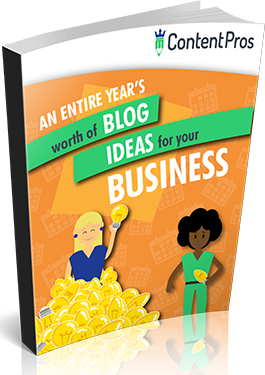It’s official: content marketing is no longer just for customer acquisition. HR content strategies are trending hot as human resource professionals seek to reach new candidates, foster company culture, and keep their best talent on board.
In today’s competitive job market, attracting and retaining top talent has become a priority. While companies have traditionally relied on job postings, referrals, and career fairs, more HR professionals are creating content to bolster their employer brand.
Here’s what HR content marketing looks like and how you can develop your HR content strategy to support the employee ecosystem.
Why Your Business Needs an HR Content Marketing Strategy
Content marketing is often used by marketers to showcase a company’s unique selling points, generate brand awareness, promote products and services, and ultimately influence buying decisions. HR can steal a page from this playbook by applying these same benefits to talent acquisition and retention:
- Highlight what makes the company a great place to work
- Increase brand awareness to broaden the talent pool
- Promote perks, benefits, culture, and values
- Encourage applicants to apply for openings or share them with others
- Share how the company is growing and improving
Great content marketing can reinforce these same selling points to current employees. Content that inspires and engages can play a part in keeping employees excited about their roles and contributions.
And given that 18% of employees are disengaged at work in 2023, there’s no better time to start an HR content strategy than right now.

5 Steps to Creating an HR Content Strategy that Works
Creating your HR content strategy is easier when broken down into achievable objectives and tasks. Here’s a high-level overview to get you started.
1. Define Your Target Audiences
HR professionals work with a variety of individuals, which we can split into three audiences:
- Prospective candidates
- New hires
- Current employees
The messaging you’ll share with each of these audiences will vary. Current employees already know what makes your company a great place to work, but job seekers and new hires will need to know why they should want to work for your company. Current employees are more likely to care about where the company is heading and how any recent developments might impact their jobs.
When you think of HR content marketing, consider each audience you want to address to align your content with their needs and interests.
2. Create Content Pipelines for Each Audience
With your audience in mind, start developing goals and content ideas to anchor your strategy.
Content Pros specializes in human resources writing. Our content writers have worked extensively with HR departments to develop content across multiple audiences and objectives. Some examples you can copy include:
- HR blogs specifically targeted at job seekers, new hires, or current employees
- Reports on employee satisfaction surveys or other employee-related metrics
- Employee spotlight articles and interviews
- Landing pages specifically for job seekers
- Onboarding guides and culture documents for new hires
- Social media channels and content specifically for new and current employees
This is just the tip of the iceberg. Content Pros HR copywriters are happy to collaborate with you on developing compelling HR content in your employer brand voice.

3. Develop and Distribute Your Content
The right channel(s) ensure your message is seen and received by the right people. Again, this can vary depending on your target audience.
For internal employees, popular channels include Slack, intranets, employee portals, digital signage, bulletin boards, and email.
For prospective candidates, your HR content will largely use digital channels, such as your website, blog, and social media.
Optimizing your content with relevant keywords will help candidates find your content via search engines. You can also use forums, guest blogs, social media groups, and employee advocates to spread your message even further.
4. Track Your Progress
Content marketing doesn’t exist in a vacuum. Much like you measure the success of your HR initiatives via metrics (like turnover rates, employee satisfaction, and time-to-hire), you can also measure the impact of content marketing.
This approach is both qualitative and quantitative. For internal HR content, you may get verbal feedback from employees regarding HR communications. For external HR content, you can track things like views, social media engagement, and SEO to see your efforts pay off.
Tracking your content will give you a better idea of who’s engaging with it and what your audiences find valuable.
5. Refine and Repeat
Creating great content (and developing the skills to do so) takes time. As you track your progress, you’ll learn more about what your audiences like to see from HR and what’s adding the most value to your employer brand. Use these insights to refine your approach so you can maintain strong connections with employees and job seekers alike.
Outsource Your Content to an HR Copywriter
Human resource professionals have a lot on their plate. If you’re struggling to find time to create an HR content strategy or simply need some professional insights, an HR content writer can help.
Our HR copywriters bring real HR expertise to our clients to create content for each of your audiences and goals. Take the shortcut to HR content marketing with a discount on your first piece of content today!

